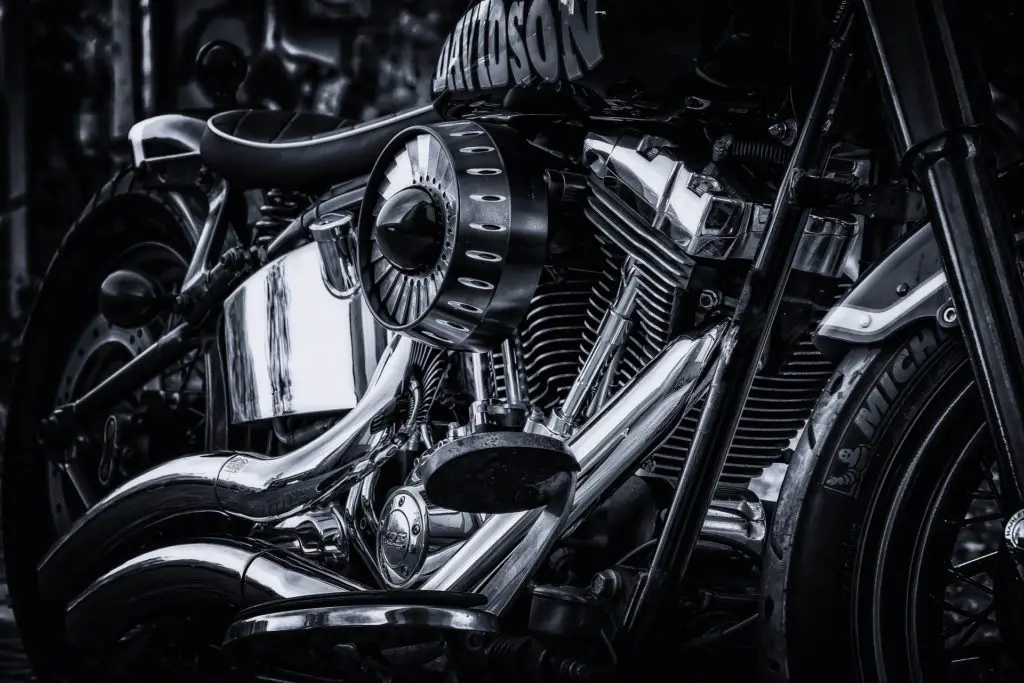There really is no universal answer to the question of how long a motorcycle should last. What brand of bike are we talking about? What is its displacement? In what sort of conditions was it operated? For how long has it sat unused? Did it get regular maintenance? Was it broken in properly?
There are as many variables as there are motorcycle models to choose from, and one person’s history of success is no guarantee of another’s. The simple truth is that motorcycles generally don’t last as long as cars do, and there are many reasons why that’s true.
With few exceptions, motorcycle engines are higher performing than car engines. They have tighter tolerances and often astronomical rev ceilings. Operating them as they were intended, they will typically see more wear than most car engines do. When operated near redline in sweltering conditions, you can expect even more wear. Regardless, wear is inevitable.
So, how many miles do motorcycles last? The short answer is it depends on how they are treated. Historically, large-displacement motorcycles routinely last from 60 to 100 thousand miles, assuming the owner does his or her part. The majority of bikes are wrecked or scrapped before they achieve those kinds of miles.
The long answer: It depends.
A Rule of Thumb
If you’re considering purchasing a motorcycle and its mileage makes your eyes go wide, it’s probably for a good reason. A longstanding rule of thumb is to multiply a motorcycle’s mileage by four (or some say three or even two). So a bike with 20 thousand miles is seen as the equivalent of a car with 80 thousand miles.
A car becomes much more difficult to sell when it gets above 100 thousand miles and practically impossible with 200 thousand miles or more. The same is true of motorcycles. That’s why a used bike with more than 30 thousand miles will sit at a dealership unsold, or at least until the dealer drops the price. Non-collectable bikes with more than 60 thousand miles on them rarely sell at all.
I should also note that riders average around three thousand miles per year on their bikes, depending on displacement and category. So a used bike with 30 thousand miles, for example, might go another 10 years before it turns 60 thousand miles on the odometer.
Like most rules of thumb, there is some reasoning behind this one. It is rare to find a motorcycle with more than 100 thousand miles on the clock, just as it is rare to find a car with three or four times that amount of miles. But many bikes can and do go much, much farther than that in their lives, and they just keep on running.

Motorcycles Can Last as Long as Cars
The recipe to longevity for motorcycles is the same as it is for any piece of machinery: care, maintenance and timely repairs. It is not more complicated than that, but it’s more expensive than it sounds. I don’t just mean the cost of those things (care, maintenance, repairs). Time is a hidden cost that reveals itself gradually.
As you ride it on the dirty roadway and pile on the miles, your motorcycle will require you to spend valuable time erasing the grime. Left unchecked, surface parts will start to wear and rust. The time you spend cleaning and maintaining your machine is an investment in its long life.
Motorcycles require equal time in maintenance as they do in cleaning. Your repair manual (you have one of those, right?) should have a periodic maintenance chart. Following it religiously will help your engine internals last longer, but it true for the whole machine.
A loose steering stem nut will cause the bearings to fail prematurely. A loose fairing bolt will allow movement that causes damage. Worn brake pads will damage the rotor. A loose, unlubricated chain will die an early death.
Even with diligent care and maintenance though, moving parts will wear out. As they begin to fail, there are usually signals such as power loss or inexplicable noises. Keep running a bike in that condition and it will eventually quit completely. If it’s a steering or suspension component, a crash could result. If it is an engine part, the motor may seize.
Parts Wear Out, Not Bikes
If you’re willing to fork out the cash to change worn or broken parts, then the bike is worth fixing. You could conceivably do this to no end; people do it all the time. It may seem foolish to spend nearly as much on a repair as a motorcycle is worth, and it probably is. But owning an aging motorcycle isn’t something you do out of reason. It is a matter of passion.
Let’s do a thought exercise. Imagine you’ve been dutiful and changed out parts on your motorcycle as soon as they’re worn. If fact, you’ve done this so many times that eventually you change every last part on the bike, until not even a single bolt remains of the bike you originally purchased.
Now I ask you, is it the same motorcycle you rode home from the dealership? I would argue that it is, but then I’m one of the people who’ll fix a bike that others would have scrapped long ago. The point is, if a bike is fixed when it breaks, then it will theoretically last forever. It just might not have very many original parts left on it.
To the Point of Impracticality
Just like bikes themselves, repairs can be more or less complex. Whether you do the repair yourself or hire a mechanic to do it, there will be down time. For a bike that is part of a collection, downtime may not be much of a problem. For a commuter, downtime is a problem.
And there is the issue in a nutshell. If a motorcycle is reliably and predictably starting, running and riding, then you may wish to hold onto it. The next one off the assembly line may be a lemon, so why chance a new one? Sooner or later though, most bikes become lemony.
Some people just have to have the newest thing. They trade in their bikes for the newest models and just perpetually pay a note – month after month, year after year. But for others, the sweetest day is the one on which we pay that final note. The next ride is the first one that truly feels free.
At that point, the only costs are insurance, fuel, maintenance and repairs. We may justify making those repairs as they arise, but if your bike is your only transportation and you come across a lengthy repair job, you’ve entered impractical territory. Expensive repairs can put you there just as easily.
A Motorcycle asts as long as there are Parts
So how do you know when to give up on your old ride and move on, assuming you haven’t fallen in love with a younger model? Well, at a certain point it will become much more difficult to find parts for any bike. A long production run might mean used parts are readily available, but even that source will dry up eventually.
Once a motorcycle reaches the age where parts are hard to come by at a dealership, it is no longer a reliable source of transportation. Even bikes with long and successful production runs will eventually be replaced in the manufacturer’s lineup. From that time on, parts will become increasingly difficult to locate.
By about 10 years’ time from the end of production, dealerships become unreliable sources for parts. That is when locating and procuring parts factors into downtime. Again, for a machine that is a member of a collection, no big deal. For a daily commuter? This is end, my friend.
Modern Motorcycles last longer
Modern motorcycles are technological triumphs. They are the concept bikes of 30 years ago, the stuff of engineers’ dreams. Since fuel injection became commonplace in the late 1990s, motorcycles have become exponentially more reliable. High miles just aren’t the negative they once were.
We are entering a time when those first computerized bikes are becoming classics. So a “classic” bike now might be just as reliable as a brand-new motorcycle. Before computerization and fuel injection, the only reliable thing about many aging bikes was their lack of reliability.
Parting Thoughts
So we’ve reached the end of a beautiful journey. How many miles are on our well-loved, well-maintained old steed? Possibly more than 100 thousand, but not likely. More than 200 thousand? They’re like unicorns. You’ll hear the odd story of bikes with 200, 300 or even 400 thousand miles (or more), but as the kids say, pics or it didn’t happen.
Most motorcycles simply become too unreliable for their owners before they reach the 100-thousand-mile plateau. They can theoretically last much longer, perhaps indefinitely, but there might not be much of the original bike left. For most of us, either practicality or the insistence of a significant other intervene and the old mare gets the boot.
If you’re in the market for a bike and you find one that is halfway to 100K, tread carefully. Depending on the brand and the previous owner’s diligence, it may be a good deal. After all, a well-cared-for bike with high miles trumps a neglected or disused one with low miles.
But all that use means repair bills are coming up like a blind curve. You just can’t see what’s on the other side until you get there.
